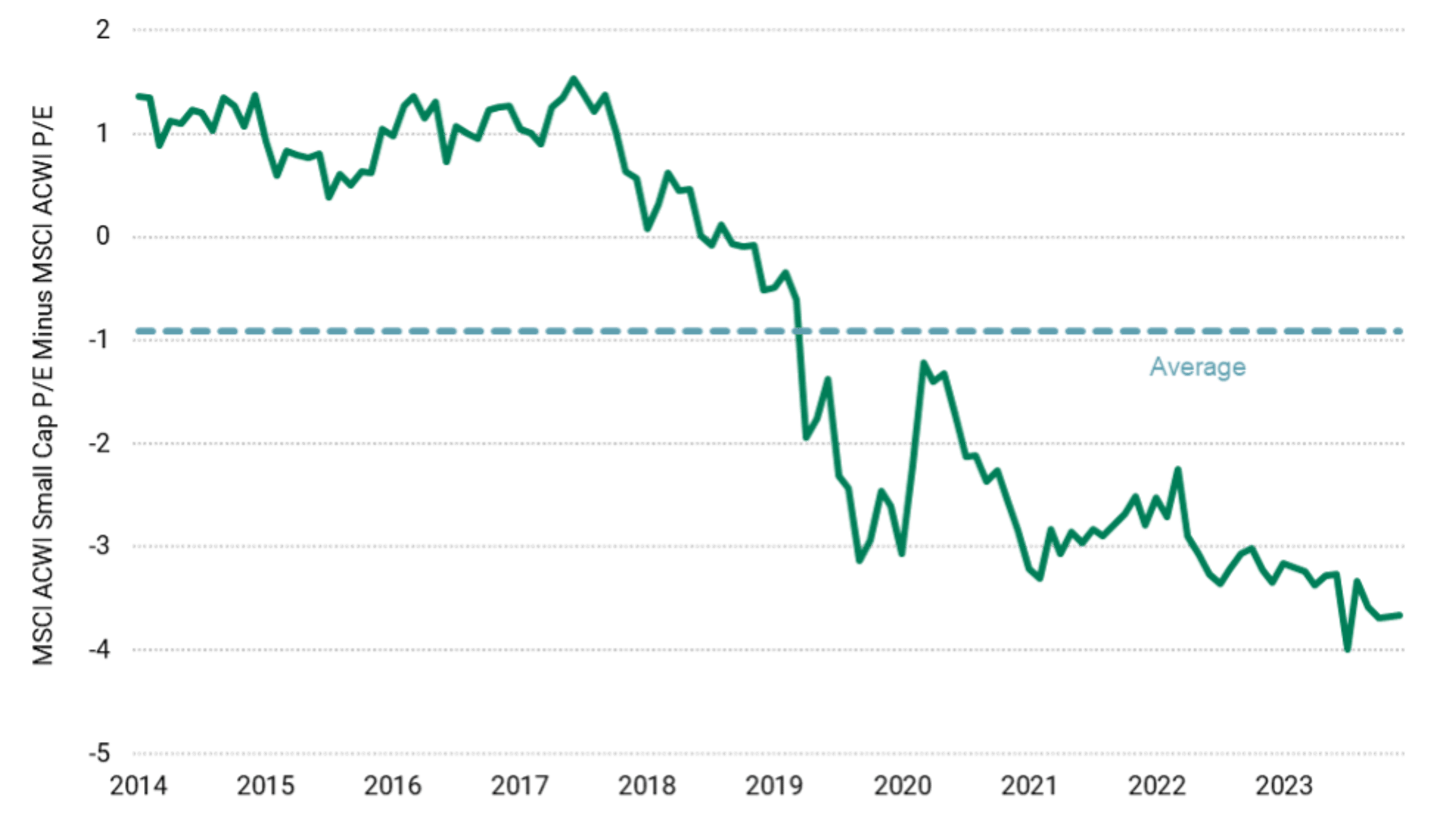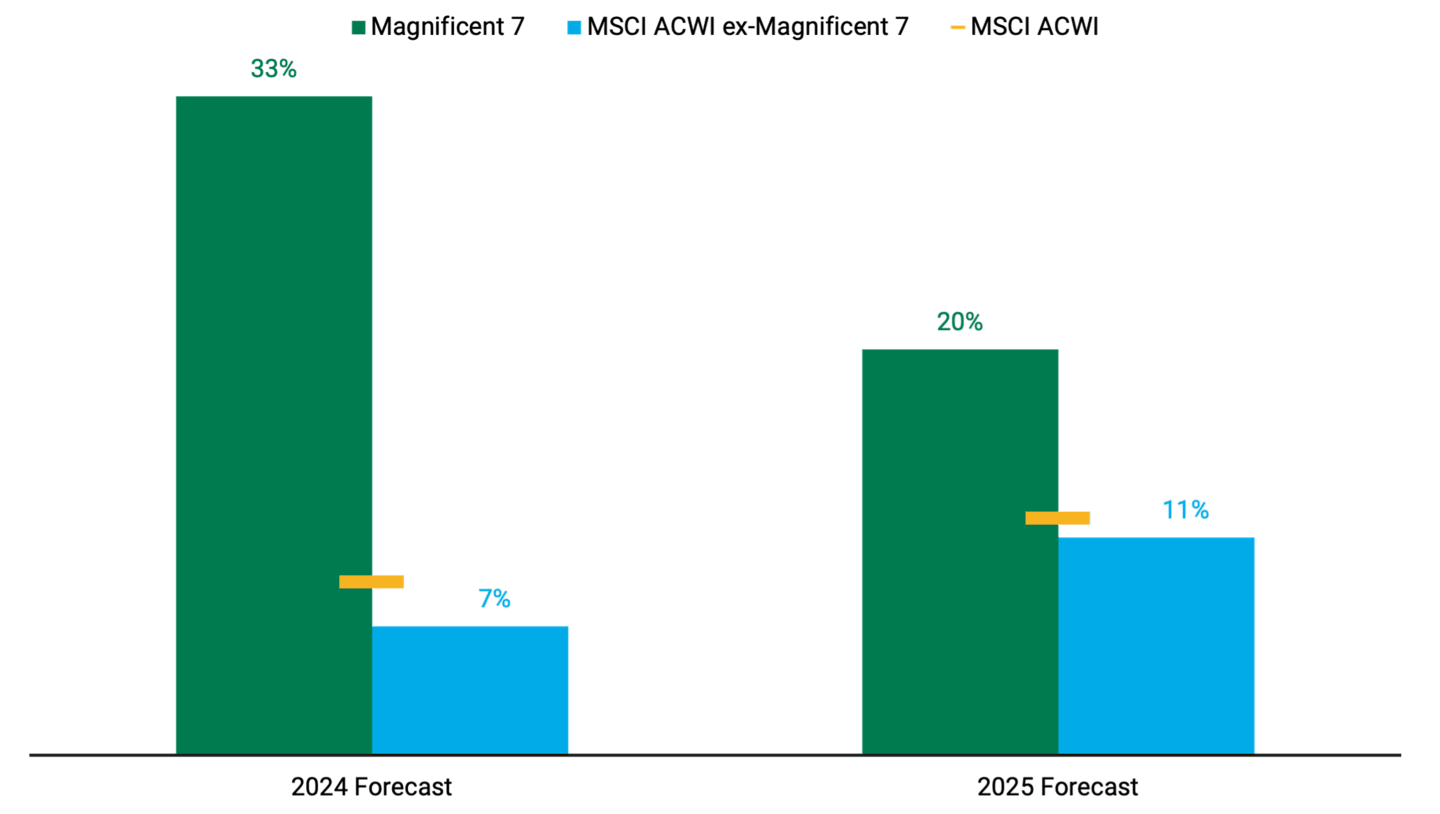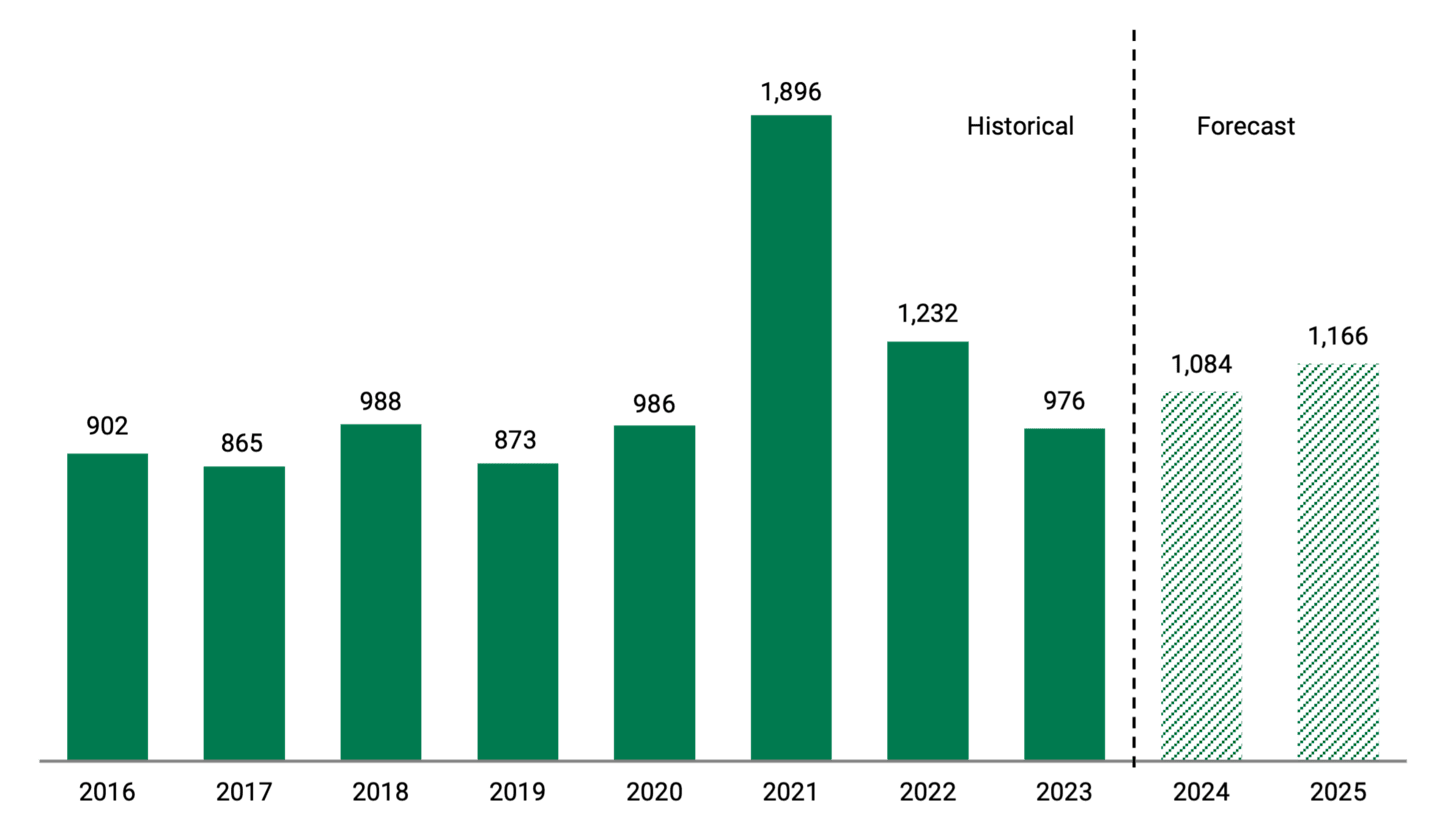What Trends Are Guiding Global Small-Caps in 2025?
We believe attractive valuations, broader earnings growth and a favorable economic backdrop may create a supportive environment for small-caps.

Key Takeaways
Changing macroeconomic conditions, including stabilizing or declining interest rates, could set up small-caps for success in the new year.
Global small-cap companies are trading at a discount relative to large-caps.
Analysts expect earnings growth to broaden outside the Magnificent Seven, which should be positive for small-caps.
After facing years of headwinds, we believe global small-cap stocks may be poised to benefit from changes in the macroeconomic environment in 2025.
Inflation, higher interest rates and recession fears have hit smaller companies hard in recent years, leading to the significant underperformance of small-caps compared with large-caps.
This trend continued into 2024, with large caps continuing their dominance through the first half of the year. However, sentiment shifted at mid-year, and small-caps rotated into favor.1
They picked up an additional tailwind after the U.S. election. Investors expected stocks, especially small-caps, to benefit from the incoming Trump administration’s approach to taxes, tariffs and regulations.
Expectations for continued rate cuts by the Federal Reserve (Fed) and other central banks have also contributed to favorable conditions for small-caps. Smaller companies often carry more floating-rate debt than their larger peers and may benefit as interest rate pressures ease.
Despite this stretch of outperformance and an improving outlook, global small-caps continue to trade at a discount compared with large-cap stocks, as shown in Figure 1. In our view, current valuations could make this an attractive entry point to offset concentration risk in mega-cap stocks.
Figure 1 | Global Small-Caps Appear to Be Undervalued
Spread in Next 12-Month Price-to-Earnings Ratio

Data from 12/31/2014 – 11/30/2024. Source: FactSet.
Global Small-Cap Earnings Growth Expected to Broaden in 2025
The strong performance of large-caps, particularly mega-caps, is hardly surprising given their strong profit growth. As shown in Figure 2, the Magnificent Seven’s profit growth has dwarfed the rest of the MSCI ACWI Index. Looking into next year, however, analysts expect the profit gap to narrow and earnings growth to broaden to more companies.
On an equal-weighted basis, small-caps are expected to deliver 22% EPS growth in 2025 versus 15% from large-caps, based on FactSet consensus estimates.
Figure 2 | Earnings Growth Is Expected to Expand
EPS Year-over-Year Growth

Estimates as of 12/9/2024. Subject to change. Source: FactSet. Forecasts are not a reliable indicator of future performance. Magnificent 7 companies include Alphabet, Apple, Amazon, Meta Platforms, Microsoft, NVIDIA and Tesla.
Top 5 Trends Supporting Global Small-Cap Profit Growth in 2025
We have identified five trends that may help drive profit growth for these companies in 2025.
1. Reshoring and Nearshoring
The incoming Trump administration has threatened to increase tariffs, which could lead more large companies to bring their supply chains closer to home. Small-caps may benefit from increased capital spending tied to reshoring and nearshoring.
Historically, small-cap companies have tended to generate more revenues domestically and tend to be less exposed to global supply chains, potentially reducing their tariff risk.
Increased reshoring may benefit companies like Clean Harbors, a provider of environmental and industrial services. Accelerating reshoring would increase U.S. manufacturing activity, a key driver of Clean Harbors’ growth.
2. AI and Data Centers
The growth of artificial intelligence (AI) is expected to continue fueling demand for data centers and energy. While the Magnificent Seven companies have attracted more attention, we believe this trend will also help small-cap companies in multiple categories.
Beneficiaries could include data center operators and providers of energy-efficient cooling solutions, such as those developed by Modine Manufacturing. Data centers are Modine’s fastest-growing end market.
3. Electrification
Increased electricity demand and capital spending tied to electrification may create opportunities. AI’s need for power is so great that existing infrastructure can’t keep up. Utilities are pouring more resources into their power grids and electrical transmission.
AtkinsRealis, an engineering services and nuclear energy company, and Arcadis, a design, engineering and consultancy services provider, are likely beneficiaries. AtkinsRealis’ revenue growth is accelerating, and its service backlog reached a record high in 2024 driven by its nuclear energy division.2
Other potential beneficiaries include Capstone Copper, as increased electricity demand should increase the demand for copper.
4. Deregulation and M&A
While M&A and IPO activity declined in 2022 and 2023, lower interest rates and a more favorable U.S. regulatory environment may lead to more deals in 2025. See Figure 3.
Deregulation could boost capital markets activity, benefiting banks and boutique investment firms like Evercore.
Figure 3 | M&A Activity May Be on the Rise in 2025
U.S. Corporate M&A Deal Volume

Data from 6/30/2016 – 12/31/2025 for disclosed deals $100 million or greater. Data for 2024 and forward are estimates as of 11/21/2024. Subject to change. Forecasts are not a reliable indicator of future results. Source: Dealogic, EY Parthenon.
5. Housing Bottlenecks
Limited sales of existing homes and lower material costs could benefit home builders serving budget-conscious and higher-end buyers. Examples in this arena include Champion Homes and Toll Brothers. Lower mortgage rates would further boost housing demand.
Global Small-Cap 2025 Outlook: Taking a Balanced Approach
We believe multiple indicators point to a more favorable outlook for small-caps. However, as bottom-up investors, the primary drivers of our constructive view are the compelling opportunities we see in a broad array of sectors and regions.
We remain focused on identifying companies with accelerating, sustainable growth and taking a balanced approach to risks and opportunities. Uncertainty around trade policy, geopolitics and interest may continue to create market volatility. Such volatility, however, often creates opportunities for disciplined investors.
Author
1FactSet, as of 11/17/2024.
2AtkinsRéalis, “AtkinsRéalis Reports Strong Third Quarter 2024 Results,” Press Release, November 14, 2024.
Historically, small- and/or mid-cap stocks have been more volatile than the stock of larger, more-established companies. Smaller companies may have limited resources, product lines and markets, and their securities may trade less frequently and in more limited volumes than the securities of larger companies.
Investment return and principal value of security investments will fluctuate. The value at the time of redemption may be more or less than the original cost. Past performance is no guarantee of future results.
The opinions expressed are those of American Century Investments (or the portfolio manager) and are no guarantee of the future performance of any American Century Investments' portfolio. This material has been prepared for educational purposes only. It is not intended to provide, and should not be relied upon for, investment, accounting, legal or tax advice.
References to specific securities are for illustrative purposes only and are not intended as recommendations to purchase or sell securities. Opinions and estimates offered constitute our judgment and, along with other portfolio data, are subject to change without notice.


